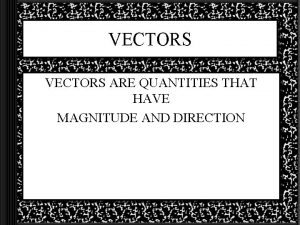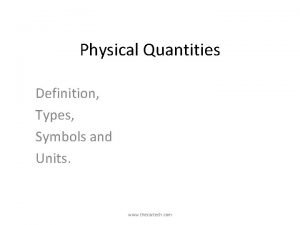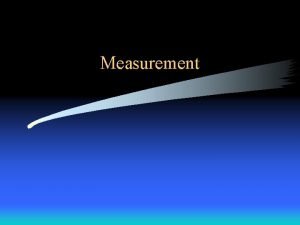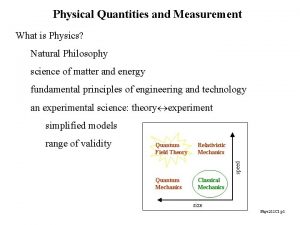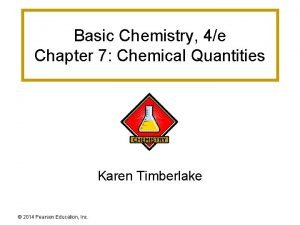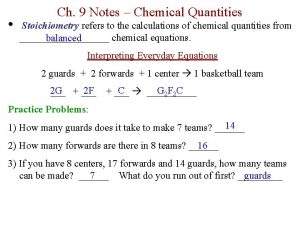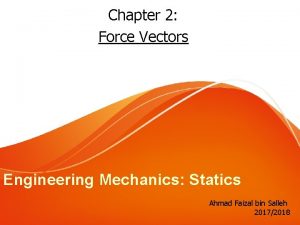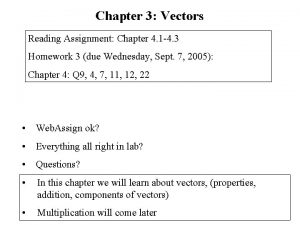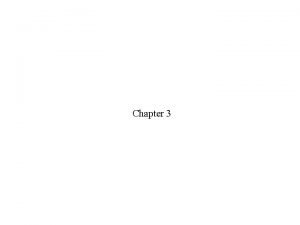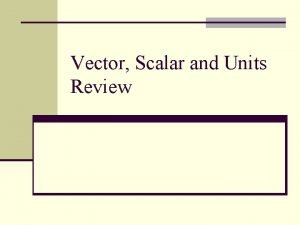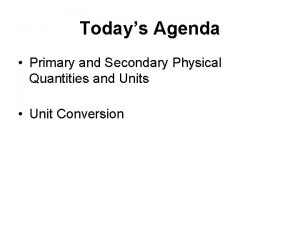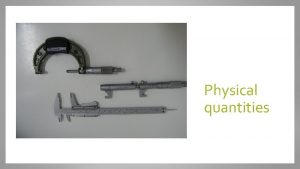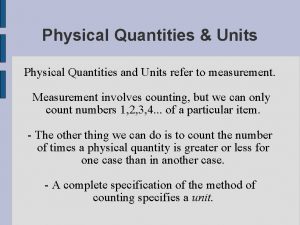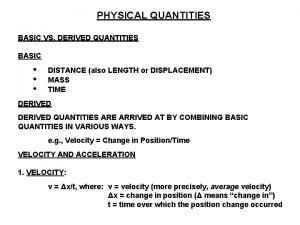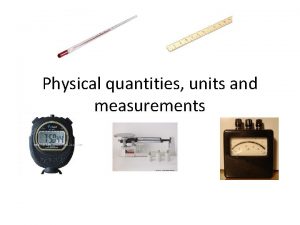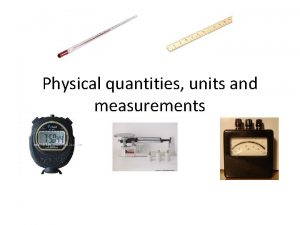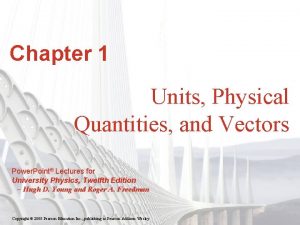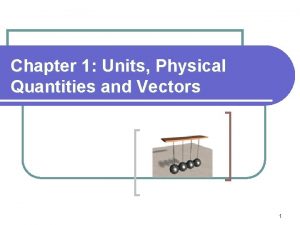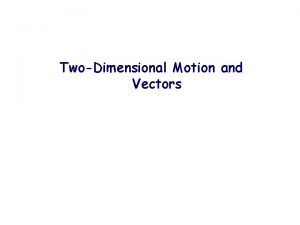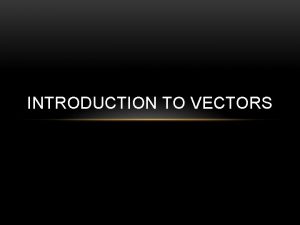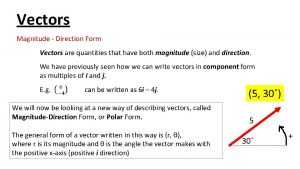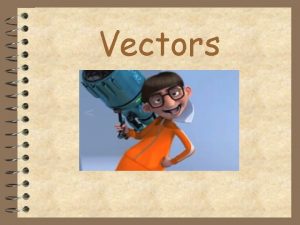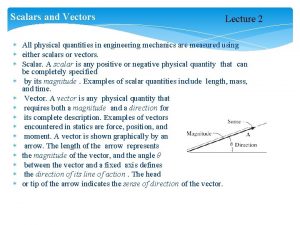Chapter 3 Vectors Vectors Vectors physical quantities having























- Slides: 23

Chapter 3 Vectors

Vectors • Vectors – physical quantities having both magnitude and direction • Vectors are labeled either a or • Vector magnitude is labeled either |a| or a • Two (or more) vectors having the same magnitude and direction are identical

Vector sum (resultant vector) • Not the same as algebraic sum • Triangle method of finding the resultant: a) Draw the vectors “head-to-tail” b) The resultant is drawn from the tail of A to the head of B R=A+B B A

Addition of more than two vectors • When you have many vectors, just keep repeating the process until all are included • The resultant is still drawn from the tail of the first vector to the head of the last vector

Commutative law of vector addition A+B=B+A

Associative law of vector addition (a + b) + c = a + (b + c)

Negative vectors Vector (- b) has the same magnitude as b but opposite direction

Vector subtraction Special case of vector addition: a - b = a + (- b)

Multiplying a vector by a scalar • The result of the multiplication is a vector c. A=B • Vector magnitude of the product is multiplied by the scalar |c| |A| = |B| • If the scalar is positive (negative), the direction of the result is the same as (opposite to that) of the original vector

Vector components • Component of a vector is the projection of the vector on an axis • To find the projection – drop perpendicular lines to the axis from both ends of the vector – resolving the vector

Vector components

Unit vectors • Unit vector: A) Has a magnitude of 1 (unity) B) Lacks both dimension and unit C) Specifies a direction • Unit vectors in a right-handed coordinate system

Adding vectors by components In 2 D case:

Chapter 3: Problem 10

Chapter 3: Problem 20

Scalar product of two vectors • The result of the scalar (dot) multiplication of two vectors is a scalar • Scalar products of unit vectors

Scalar product of two vectors • The result of the scalar (dot) multiplication of two vectors is a scalar • Scalar product via unit vectors

Vector product of two vectors • The result of the vector (cross) multiplication of two vectors is a vector • The magnitude of this vector is • Angle φ is the smaller of the two angles between and

Vector product of two vectors • Vector is perpendicular to the plane that contains vectors and its direction is determined by the right-hand rule • Because of the right-hand rule, the order of multiplication is important (commutative law does not apply) • For unit vectors

Vector product in unit vector notation

Answers to the even-numbered problems Chapter 3: Problem 12: (a) 12 (b) - 5. 8 (c) - 2. 8

Answers to the even-numbered problems Chapter 3: Problem 38: (a) 57° (b) 2. 2 m (c) - 4. 5 m (d) - 2. 2 m (e) 4. 5 m

Answers to the even-numbered problems Chapter 3: Problem 58: (a) 8 i^ + 16 j^ (b) 2 i^ + 4 j^
 Units physical quantities and vectors
Units physical quantities and vectors Chapter 1 physical quantities and measurement
Chapter 1 physical quantities and measurement Magnitude of unit vector formula
Magnitude of unit vector formula Relation between angular and linear quantities
Relation between angular and linear quantities Vectors are quantities that have magnitude and
Vectors are quantities that have magnitude and International system
International system All physical quantities are measurable or not
All physical quantities are measurable or not Physical quantities and measurement class 6 worksheet
Physical quantities and measurement class 6 worksheet Chapter 7 chemical quantities answer key
Chapter 7 chemical quantities answer key Chemistry chapter 10 chemical quantities
Chemistry chapter 10 chemical quantities Chapter 7 chemical quantities answer key
Chapter 7 chemical quantities answer key Molar mass map
Molar mass map Chapter 10 chemical quantities practice problems answer key
Chapter 10 chemical quantities practice problems answer key Chapter 9 chemical quantities
Chapter 9 chemical quantities Pricing tripod in service marketing
Pricing tripod in service marketing Physical activity and physical fitness assessments grade 9
Physical activity and physical fitness assessments grade 9 Statics chapter 2
Statics chapter 2 Chapter 3 vectors worksheets
Chapter 3 vectors worksheets Chapter 12 vectors and the geometry of space solutions
Chapter 12 vectors and the geometry of space solutions Chapter 12 vectors and the geometry of space solutions
Chapter 12 vectors and the geometry of space solutions This chapter shows how vectors can be added using
This chapter shows how vectors can be added using Vector vs scalar quantities
Vector vs scalar quantities Similarity between vector and scalar
Similarity between vector and scalar Primary and secondary units
Primary and secondary units




